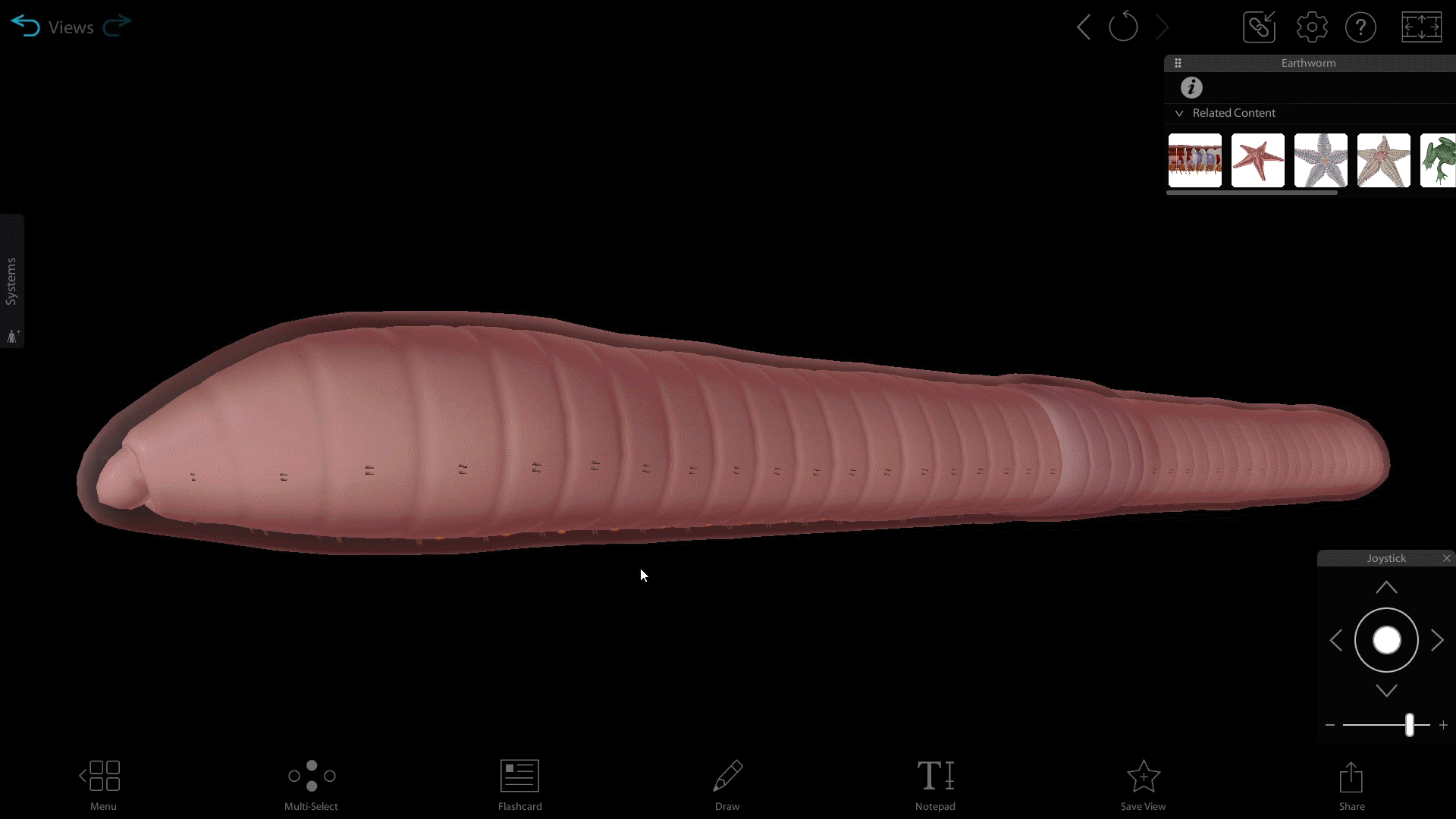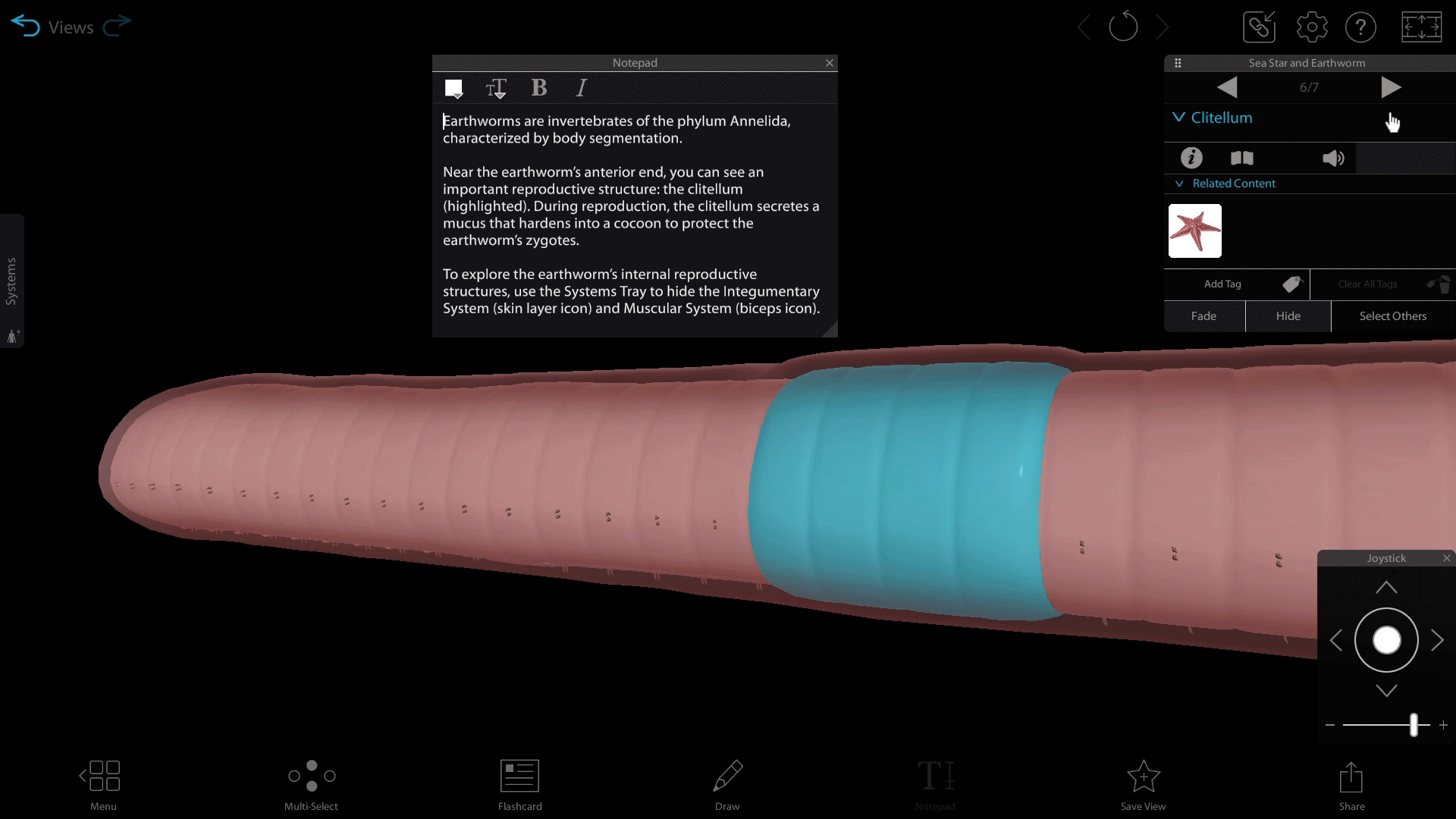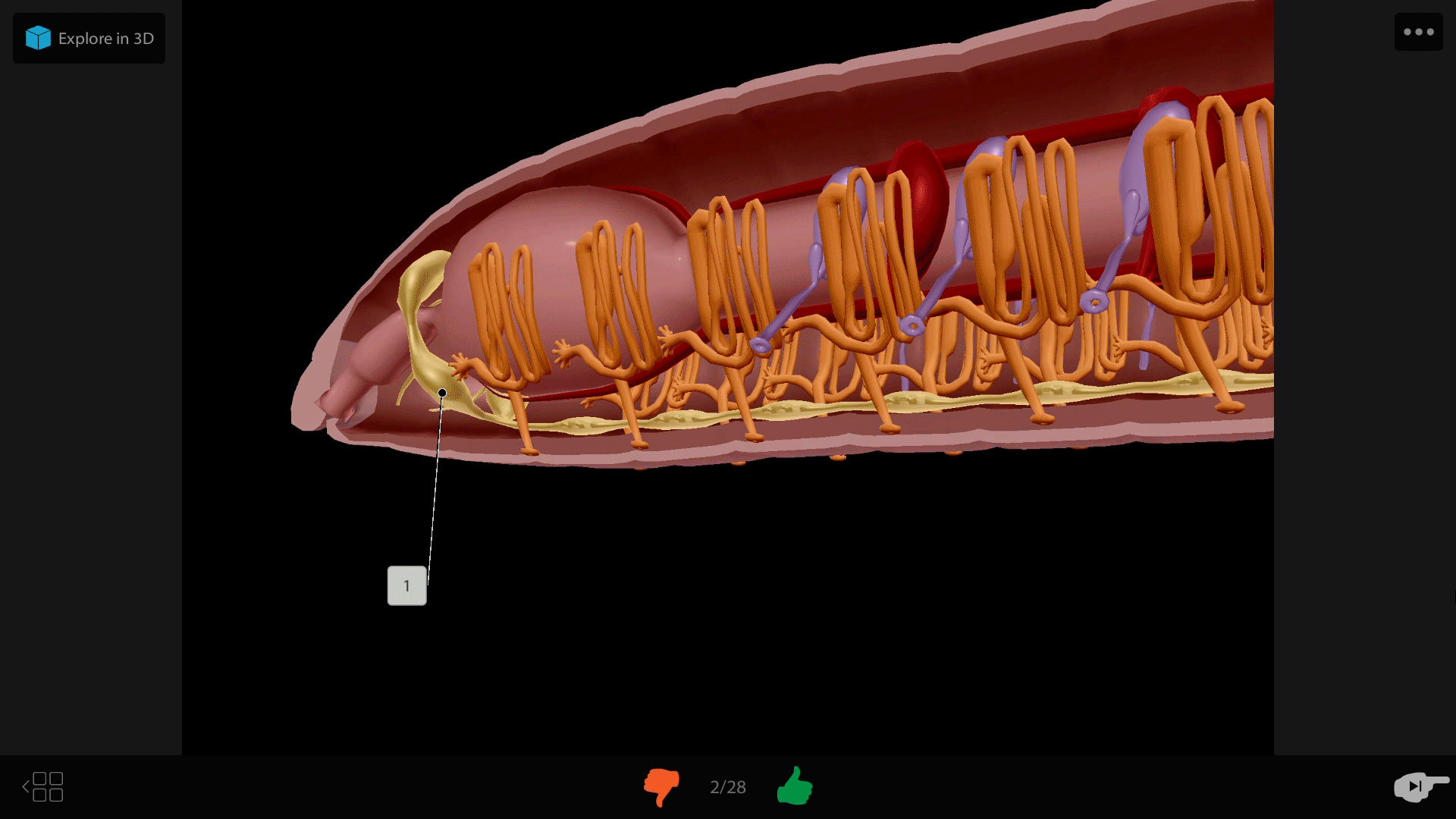4 Ideas for Teaching Earthworm Anatomy with Visible Body
Posted on 5/12/23 by Sarah Boudreau
Biology classrooms across the globe use earthworms to introduce invertebrate anatomy to students, and Visible Body Suite is here to help!
VB Suite is your visual guide to biological concepts and processes in addition to human anatomy and physiology. Its 3D model library covers prokaryotic and eukaryotic cells, monocot and dicot plant structure, energy, genetics, and blood cells—plus, students can explore vertebrate and invertebrate anatomy without extra equipment or cleanup. The app features four dissectible animal models: a frog, a pig, a sea star, and an earthworm.
With VB Suite's 3D interactive earthworm model, students can learn about earthworm anatomy without any prep, cleanup, squeamishness, or clumsy scissor cuts.
In this blog post, we’ll go over four ways you can use the earthworm model in your classroom!
#1 Free earthworm dissection lab manual
Are you a fan of free resources? VB Suite has a ton of premade content that will help you teach earthworm anatomy. Check out the earthworm lab manual, which was designed alongside biology instructors to give your students a thorough understanding of earthworm form and function.
The manual includes step-by-step instructions to guide your students through the model in addition to questions about earthworm anatomy and physiology.
Here’s a pro tip when it comes to dissection labs: select the desired structure and then hit the H key to hide the structure and simulate a dissection. To fade a structure, select it and then hit the V key to make it transparent.

GIF from VB Suite.
In addition, the info box is full of great information that makes VB Suite like a virtual textbook. When you select a structure, click on the definition icon to read about the structure and its context. Click on the pronunciation icon to hear how the name is pronounced—this is especially helpful for giving students the confidence to discuss anatomy. At any time, click on the information icon to read an overview of earthworms.
Through navigating the model and reading the info boxes, students will work through the lab manual activities and come away with a more thorough understanding of earthworms.
#2 From Tour to real life
Use VB Suite's Tour feature to create an interactive guide to earthworm anatomy. A Tour is a connected series of saved views. Create a view by adjusting the model, adding tags, notes, drawings—whatever you need to illustrate your point. Save it, and then put your saved views into a Tour to create a presentation!
Don’t have time to make your own Tour? We’ve got a premade Tour that covers the basics of the sea star and the earthworm.

GIF from VB Suite.
After your students have taken a virtual Tour of the earthworm, it’s time to get hands-on. VB Suite has an earthworm, sea star, frog, and pig model—but only one of those animals is easily found and easily caught!
With garden spades and some patience, your students can find and examine earthworms—weather permitting, of course. Studies have found that there are between 285,000 and 2 million earthworms per acre depending on soil quality, so the odds of finding some squirmy friends are high.
While your students look for earthworms, ask them questions about ecology and the earthworm’s habitat. Your students will look at their environment in a whole new way as they start thinking from a worm’s perspective!
Once your students have found their earthworms, they can examine and identify the exterior structures they viewed in greater detail in the Tour.
#3 A favorite flexible tool: Flashcard Decks
There’s a good reason Flashcards are such a popular learning tool, as they can be used in many different situations, such as:
- After a lesson to review information
- At the beginning of class to get students back in the biology mindset
- During the lesson to reinforce information
- After class to use as a study tool
VB Suite's virtual Flashcard Decks combine the utility of flashcards with 3D learning. Since Flashcard Decks are easily shared with a couple clicks, creating a Deck is also a great assignment, one that asks students to use higher-order thinking skills to assess information.

GIF from VB Suite.
We’ve created two ready-to-go Flashcard Decks about the earthworm: one on structures, one on functions.
#4 Dissection Jeopardy!
Look familiar? We’ve adapted this activity from a blog post about our human anatomy product, “5 Ways to Gamify Your A&P Classroom with Visible Body”!
Jeopardy is one of the most popular classroom games because it’s a simple, direct way to review information. In this version of the game, students will access VB Suite on their own computers and navigate to the earthworm model. Using the dissection tool, students will find and identify the structures described in the Jeopardy prompt.
For example, if the Jeopardy prompt was “This structure connects the brain to the ventral nerve cord,” the students would use the dissect tool to find the subpharyngeal ganglion.
Ask students to use the drawing tool to draw arrows or circle their answers, then raise their hand to “buzz in.”
If you want to foster more collaboration, this activity could be done in small groups. If you’re leading this as a group activity, try adding a leaderboard! While a classroom leaderboard might be too overwhelming to juggle while teaching, assigning points to groups would be a more manageable task and can motivate students to achieve more.
Not only does this activity promote recall—it also challenges students to use spatial reasoning to think in 3D.
Conclusion
The earthworm model in VB Suite is loaded with features to get students engaged and learning!
Here at Visible Body, we’ve got a passion for helping students learn and instructors teach. The VB Blog is full of ideas and resources to help you stay at the top of your pedagogy game—check out these other blog posts!
- How to Teach with Visible Body’s Dissectible Virtual Frog Model
- Four Ways to Teach DNA Structure with Visible Body
- How Can I Use Visible Body to Teach State Biology Standards?
- How 3D Models Help Biology Students
Be sure to subscribe to the Visible Body Blog for more awesomeness!
Are you an instructor? We have award-winning 3D products and resources for your anatomy and physiology or biology course! Learn more here.



